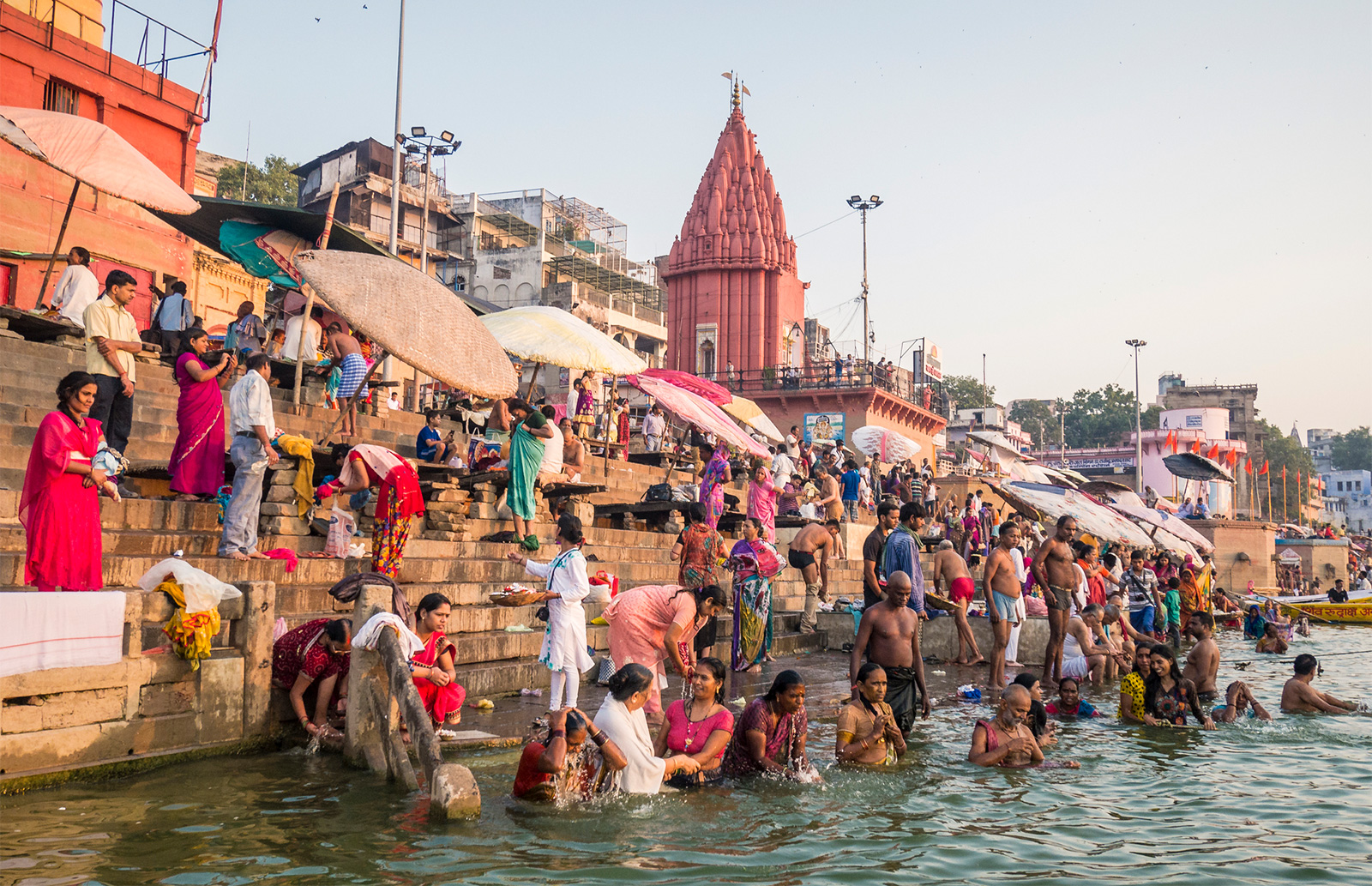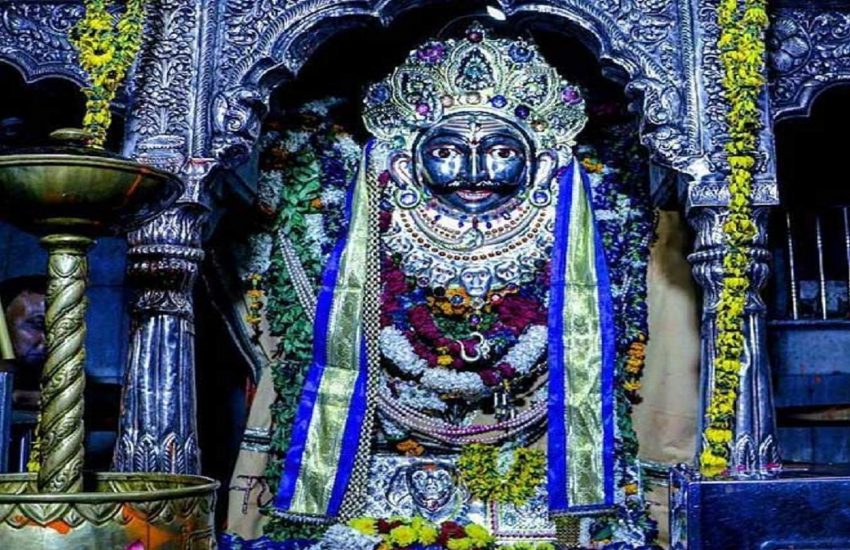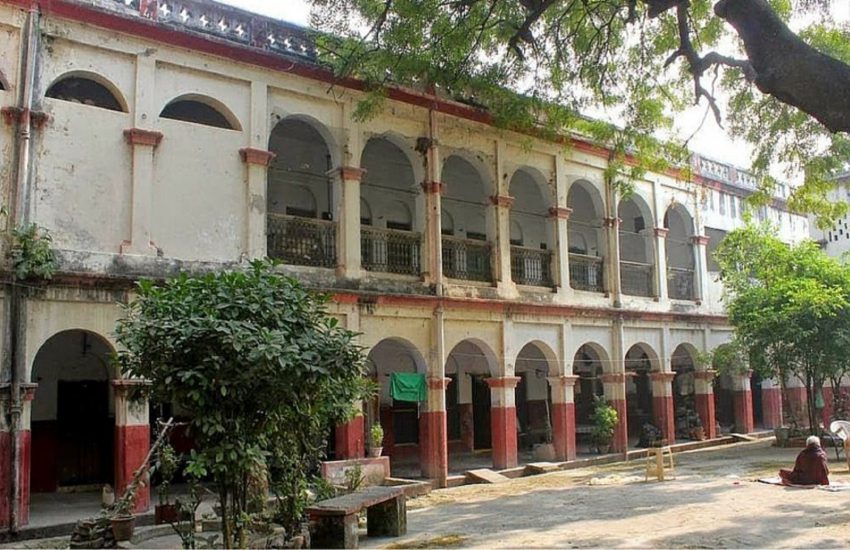Holy Rivers Tour In India
No doubt water is of utmost importance in human’s life as it is a basic need of body. Besides life supporting unit water has special importance in Hinduism. In Hinduism water is considered as the holiest thing and also it is used in the various rituals. It is believed that only a dip in the holy river cleanses all the sins and a person is to attain salvation or moksha.
In Hindu mythology rivers are worshipped as a goddess. Rivers are pictured as female. In Mahabharata the Ganga is shown riding on a crocodile, Yamuna’s connection with the Pushti Marg Sampradaya riding on a turtle. There are some stories in which connection is seen among the descents of Ganga devi and Vishnu and Shiva who is also depicted with the Ganga entering the locks of his hair.
Holy River Ganga :-
River Ganga is a major river of the Indian subcontinent. The 2525 km long river is one of the longest rivers in the world. The river rises in the western Himalayas in the Indian state of Uttarakhand, and flows south and east through the Gangetic Plain of North India into Bangladesh where it drains into the Bay of Bengal through its vast delta in the Sunderbans.
Ganga is personified as Goddess and holds an important place in the Hindu religion. Ganga is not only a river but also a mother, a goddess, a tradition, a culture and much more. According to Hindu mythology, it is believed that bathing in the river Ganga causes the remission of sins and facilitates the attainment of salvation or nirvana. Many peoples bathe in the river to cure the illness. Not only this, people come from far or near to immerse the ashes of their kin in the waters of the Ganga so that the deceased person may get free from the process of birth and rebirth. One more belief is that, one spoon of the holy water of Ganga in the mouth of dying people take his soul to heaven.
The Ganga is the embodiment of all sacred waters In Hindu mythology. After bathing in the river at the time of returning, Hindu families carry small quantities of river water with them as Hindu families keep Ganga water in their homes as they consider it to be very pure. Hindu bathe in the water of Ganga, pay homage to their ancestors and to their gods by cupping the water in the hands, lifting it and letting it fall back in the river. It is believed that Ganga descends to earth to make the earth pious, fertile and wash out the sins of humans
The holy town like Haridwar, Allahabad, Kanpur and Varanasi attract thousands of pilgrims. Thousands of Hindu Pilgrims arrive at these towns to bathe in the Ganga and to celebrate festivals. Kumbh mela and chhath puja are some of the important Hindu festivals which are celebrated on the bank of river Ganga. It is mentioned in ancient scriptures that water of Ganga holds the blessings of Lord Vishnu’s feet; hence mother Ganga is also called Vishnupadi, which means “Emanating from the Lotus feet of Supreme Lord Sri Vishnu.”
Holy River Yamuna :-
Yamuna River is also known as Jamuna. It is a major river of northern India, basically in Uttarakhand and Uttar Pradesh states. The river originates from the Yamunotri Glacier at a height of 6387 meters on the south western slopes of Banderpooch peaks in the uppermost region of the lower Himalayas in Uttarakhand. The river Yamuna is connected to religious beliefs. Somewhere it is mentioned that Saptrishi kund, a glacial lake is the source of the Yamuna River. At an altitude of 3235 m, there is a holy shrine of Yamunotri. The temple of Yamuna is on the left bank of the Yamuna. The black marbled temple was constructed by Maharaja Pratap Shah of Tehri Garhwal. The temple remains closed from November to May. At Hanumanchatti, an ancient sage, Asit Muni use to live.
History :-
The Yamuna is mentioned at many places in the Rig Veda. There are different beliefs among people about Yamuna. Literally Yamuna means twins. The story of the Yamuna is well described in Rig Veda as her excessive love for her twin, Yama, who in turn asks her to find a suitable match for herself, which she does in Krishna. After the death of Sati Devi lord Shiva went to Yamuna River and it is believed that the river absorbed all his sorrow and became black. Somewhere it is also mentioned that the dark color of the river is due to the color of lord Krishna.
Yamuna is considered as a holder of infinite love and compassion therefore it is believed that it grant freedom even from death.
Religious Importance :-
Yamuna considered respectfully as Yamunaji, holds an important position in Pushti Marga, a sect of Hinduism based on the Shuddh Advaita, in which Shri Krishna is the main deity, propagated by Vallabh Acharya. Hindu has connection with river Yamuna also because Lord Krishna used to play with his cowherd friends on the bank of river Yamuna in his childhood days. It is the River Yamuna which was crossed by the father Vasudeva to bring the baby Lord Krishna to a safe place.
Yamuna’s Course :-
The Yamuna also called Jamuna originates from the Yamunotri Glacier at a height of 6387 metres on the south western slopes of Banderpooch peaks in the uppermost region of the Lower Himalayas in Uttarakhand. Yamuna starts its journey from Yamunotri and reaches up to Vrindavan and Mathura. It crosses several states, Uttarakhand, Haryana, and Uttar Pradesh. Yamuna passes by Uttarakhand and later Delhi. Yamuna joins Ganga in the Prayag, which is one of the most sacred places in India. The holy river Ganga and Yamuna flow together till Ksheer Sagar. As by the order of Lord Krishna, the Ganga continue to flow till it reaches Patal Loka. And the Yamuna reaches the heaven rising skywards, then the abode of Lord Krishna.
Holy River Saraswati :-
The Saraswati River, during its heydays, is described to be much bigger than Sindhu or the Indus River. The course of the Saraswati River is responsible for both – development as well as decline of river port towns in Bengal. In ancient times, the river saraswati drained the north and northwest region of India. Now the Saraswati River doesn’t exist but the river is one of the main Rigvedic Rivers mentioned in the Rig Veda and later Vedic and post-Vedic texts. In Rigveda, river Saraswati is called as Saptsindhu for the region bounded by river saraswati in the east and sindhu in the west as this is the seventh river of the Sindhu Saraswati River system. The three word tribute to the Yamuna River in the Rig Veda are;- Ambitame, the best of the mothers; Naditame, the best of the rivers; and Devitame, the best of the goddesses.
Geographical information :-
The Saraswati River is mentioned between the east of Yamuna and west of Sutlej in the early Rigvedic hymn. In Vedic scripture, Saraswati River dried up in desert. Saraswati River is a trans-boundary to India as well as to Pakistan.
In ancient times, Saraswati River was known as Ghaggar. The river togetherely flows only in the monsoon. The Ghaggar originates from the Shivalik Mountains of the Himachal Pradesh and runs through the states of Punjab. Hakra is an extension of Ghaggar in India. River Saraswati is joined by the Sutlej and the Vedic Shatadru River as a tributary at Shatrana, about 25 km south of Patiala.
History and Mythology :-
The River Saraswati was revered and considered important because the river nurtured the people living on the bank. The river is mentioned some fifty times in the hymns of the Rigveda. In post-Rigvedic literature, the origin of the Saraswati is identified as Plaksa Prasravana. The five tributaries of the Saraswati River were- the Punjab rivers Drishadvati, Satudri (sutlej), Chandrabhaga (chenab), Vipasa (Beas) and the Iravati (Ravi). Recently, satellite view confirmed the existence of large number of ground faultsin the earthquake prone northwest India that constituted the Saraswati Sindhu valley.
Mahabharata speaks that the Saraswati dried up in a desert. According to Hindu mythology, Balram along the banks of the Saraswati from Dwarka to Mathura made a journey. According to Puranas the Saraswati River separated into several lakes. In Mahabharata it is also described about the fissures and faults in the ground on the dry bed of river Saraswati.
Many geologists identified the Saraswati River with the present day Ghaggar Hakra Rive in the 19th and early 20th century. Some of the scholars noticed that the description of Sarasvati flowing through the “high mountains” does not tally with Ghaggar’s course.
Holy River Narmada :-
The Narmada also called the Rewa, is the most famous Rivers of India. Narmada River flows from east to west. The river is the fifth longest river in the Indian Subcontinent. The sheer glimpse of the Narmada River cleanses one’s soul, so the river is also known as giver of pleasure and also mother. It is believed that Even River Ganga itself visits the Narmada River once in a year in the structure of black cow to cleanse the accumulated sins of her. Narmada River is older than the river Ganga.
Along the River :-
The Narmada River flows entirely within India. The source of the Narmada is a tiny reservoir known as the Narmada Kund, which is situated on the Amarkantak Hill in Anuppur District of East Madhya Pradesh. Narmada is said to have been in love with the Sonbhadra. Narmada asks Juhilla, which is a tributay of son, to forward her message of love. Instead of forwarding message, the Juhilla attracted Sonbhadra towards herself. The anger and the hatred of the Narmada erupted and force her to jump off the western cliffs of Amarkantak. The river moves down from the Amarkantak range at the Kapildhara waterfall. Kapildhara is named after Saint Kapil. The river moves on till the destroyed fortress of Ramnagar arrives. The Bangar meets Narmada from the left. Subsequently, Narmada River flows to the northeast in a thin circle in the direction of Jabalpur. Narmada hurtles down about 9 meters, known as Dhuandhara , the river runs for 3 km in a thin deep watercourse over the basalt stones and magnesium limestone, known as the marble rocks. The mesmeric sight created at night when white, silvery moonshine bathes the gorge. There is also a chausatha Yogini Mandir. However the idols have been deteriorated, they still retain their original and natural beauty. Bheraghat has a collection of white limestone cliffs. Bheraghat is about 24 km away from Jabalpur.
To the north, the basin of Narmada is restricted to the Barna Bareli terrain, finishing at Barkhara hills in front of Hoshangabad. A number of the major tributaries of Narmada meet it in the first basin, coming from the south. The Shakkar, the Sher, the Tawa, the Dudhi and the Ganjal are some of the important tributaries in the south. And in north the tributaries are:- The Barna, the Hiran, the Karam, the choral, the lohar.
Jabalpur is the second largest city of Madhya Pradesh state. Jabalpur city is named after a saint called Jabali. Jabalpur is of India fame for its marble rocks.
Hindu believes that every stone in the bed of the Narmada River is a Shivalinga. Also name of the places along the banks of Narmada River are on the different names of Shiva, such as- Omkareshwar, Maheshwar, and Mahadeo. The river flows through rift valley, which is supposed to be one of the oldest geological formations of India.
Omkareshwar is a place along the bank of Narmada River has a number of temples. Maheshwar which is situated on the northern bank of the river is also famous for the delicate hand woven saris. An island on the Narmada River owns one of India’s twelve great Shivalings.
Holy River Sindhu, the Indus :-
Sindhu River is also known as the Indus River. The River is one of the longest rivers in Asia. Sindh River originates on the Malwa plateau in Vidisha district, and flows north-northeast through the districts of Guna, Ashoknagar, Shivpuri, Datia, Gwalior and Bhind in Madhya Pradesh to join the Yamuna River in Etawah district, Uttar Pradesh.
The Legends :-
The Indus is one of the few rivers in the world to exhibit a tidal bore. The river is a key water resource for Pakistani’s economy. According to early Tibetans, the Indus River guarded the frontiers of United India rising from the lake Mansarovar in Tibet. Later, it was discovered that the Indus River originally originates a few kilometer north of Mansarovar Lake. The Brahmaputra and the river Sutlej also originates from Mansarovar along with Indus River.
Indus River is a backbone of agriculture and food production in Pakistan. Also the word India is derived from the Indus River. Myth logically, the four separated river – the Ganga, the Sindhu, the Brahmaputra and the Karnali were described as emanating out of certain animal mouths. The Pakshu went westward in the beginning and came out of a horse’s mouth to the east which called as the Brahmaputra. Therefore, the water of the Brahmaputra river are cold and it is believed that intake of the water make one as strong as Horse. The sita went southwards in the beginning and later came out from a lion’s mouth to the north which is known as the River Sindhu. And the people who drink water of the river Sindhu become heroic like a lion. The water of the River Sindhu is usually warm. The karnali came out from a peacock’s mouth and the holy river Ganga is supposed to be came out from an elephant’s mouth. One who intake water of Karnali become as beautiful as peacock. Also as the Ganga emanates from the mouth of an elephant, people who drink water of the Ganga River become as worthy as elephant with good memory, sense of gratitude and strong. Kailash Parvat was the home of Lord Shiva, therefore these four rivers makes a seven times round around Kailash Parvat before going down.
Derivation of the name – Indus :-
The River derived its name from Sanskrit word “Sindhu” which is a combination of two words ‘Sim’ and ‘dhu’ and gives a meaning “a body of trembling water, river, stream or ocean.” Greeks called this river Sinthos. And in Latin the river is “Sindus”. Sindhu is considered as a strong warrior amongst other rivers which are seen as goddesses and compared to cows and mares yielding milk and butter.
The inhabitants of the areas through which the Indus River flows on and creates a splendid natural beauty and wealth, are varied in terms of faith and race. The stream of the Indus River is also decided by the seasons as it reduces significantly in the winter and it overflows its banks in the monsoon. In terms of yearly discharge the river is the 21st biggest river in the world.
Remnants of Indus Valley Civilization :-
Remnants of Indus Valley Civilization have been discovered from as far south as Mumbai and as far north as the Himalayas and northern Afganistan. Indus Valley Civilization is spread across hundreds of sites and it had a number of inventions.
According to historians, the original inhabitants of the Indus Valley Civilization were the Dravidians who were shifted to the south when the Aryans arrived. During excavation town planning, coins, statue of dancing girls were found. Trace of the Lord Shiva was found in the Harappa civilization as there was found a bull inscribed coin, which is a symbol of Lord Shiva. Lord Shiva was worshipped as Pashupati, which means the lord of animals. Much new research is being undertaken on the ground in India and Pakistan, as well as in Oman and Afghanistan. Many scholars are still taking it as a challenge is trying to explore more things.




